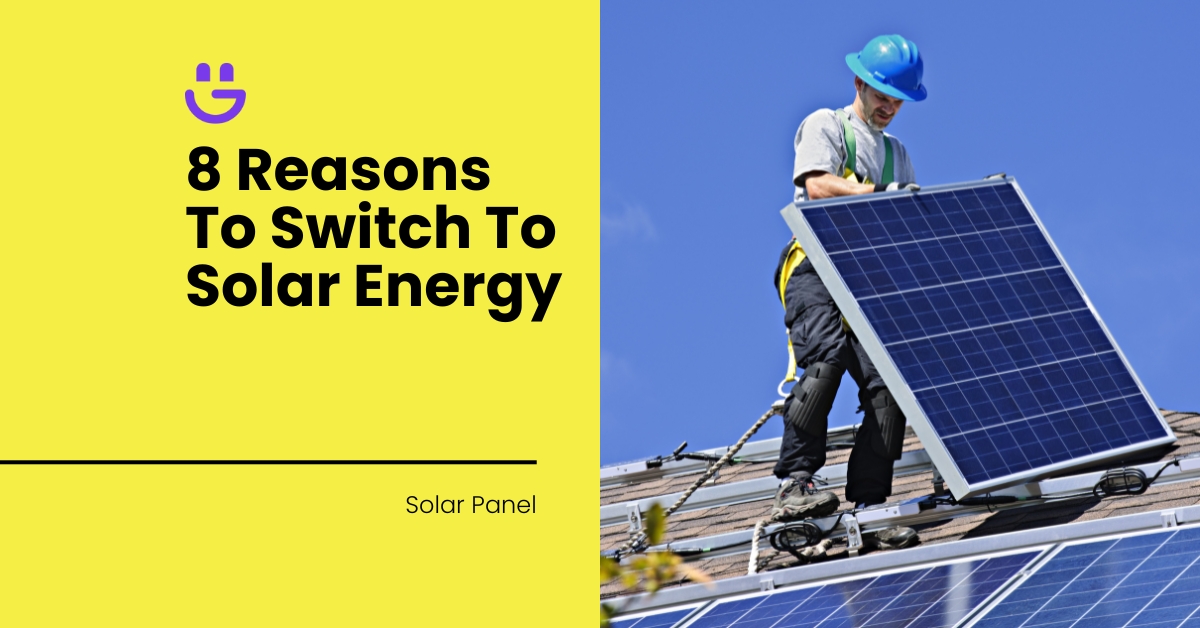Last Updated on July 29, 2024
You can charge a 100 Ah battery with any solar panel size. What differs is the length of time it takes to charge the battery.
Ideally, it will take around 5 hours for a 300 W solar panel to charge a 100 Ah battery, while a 500 W solar panel will take 3 hours to reach full battery capacity.
However, many factors will influence this, including the type of solar charge controller used and the amount of peak sun hours.
Let’s explore how you calculate the correct size solar panel for efficient battery charging. We’ll also look at what affects charging efficiency.
Contents
What Size Solar Panel is Needed to Charge a 100Ah Battery?
When determining what size solar panel can charge a 100 Ah battery effectively, you need to do a few calculations.
Solar panel size calculation
1. Calculate the wattage of the battery
First, you need to convert the battery capacity, which is 100 amp hours (Ah) into wattage hours (Wh).
Calculation: (battery capacity) x (voltage) = wattage hours
The vast majority of 100 Ah batteries are 12 V. So, we will use this for the calculation:
100 Ah x 12 V = 1,200 Wh
2. Work out the solar panel’s output
Next, you need to understand the output of the solar panel you are planning to use. In this example, we’ll use a 250 W solar panel.
Solar panels and battery charging systems are not 100% efficient. A typical efficiency might be around 85%. This means that only 85% of the power generated by the solar panel is used to charge the battery.
So, to get the true output of the solar panel, multiply its wattage by its efficiency:
250 W x 0.85 = 212.5 W
3. Final calculation
Once you understand the battery’s capacity in watt hours and the true output of the solar panel, you can do a final calculation which will tell you how long the charging process will be:
Total energy required (Wh) ÷ Power output (W) = time (peak sun hours)
In our example, the calculation would look like this:
1,200 Wh ÷ 212.5 W = 5.6 hours to charge a 100Ah battery in peak sun hours
Of course, this length of time may be inconvenient for you. Therefore, we recommend performing further calculations with different-sized solar panels until you find one that matches your desired charging time.
Here are some additional examples using common solar panel outputs:
| Panel wattage | Output at 85% efficiency | Number of peak sunlight hours to charge |
|---|---|---|
| 250 W | 212.5 W | 5.6 hours |
| 300 W | 255 W | 4.7 hours |
| 350 W | 297.5 W | 4 hours |
| 400 W | 340 W | 3.5 hours |
| 450 W | 382.5 W | 3.1 hours |
| 500 W | 425 W | 2.8 hours |
| 600 W | 510 W | 2.3 hours |
How many solar panels are needed to charge a 100 Ah battery?
If you want to reduce the amount of time it takes for your solar panel to charge the battery, you will need more than one of them.
To understand how many solar panels you need, you can perform a quick calculation.
For this, take 1,200 Wh (the wattage size of your 100 Ah 12 V battery) and divide it by the true output of the solar panel (around 85%). We’ll use the 250 W solar panel again as an example:
250 W x 0.85 = 212.5 W (true output)
1,200 Wh ÷ 212.5 W = 5.64 solar panels required (round up to 6)
Here are more examples using different-sized solar panels:
| Panel wattage | Output at 85% efficiency | Number of solar panels needed to charge 100 Ah battery in one hour |
|---|---|---|
| 250 W | 212.5 W | 6 |
| 300 W | 255 W | 5 |
| 350 W | 297.5 W | 5 |
| 400 W | 340 W | 4 |
| 450 W | 382.5 W | 4 |
| 500 W | 425 W | 3 |
| 600 W | 510 W | 3 |
Factors that influence the size of solar panels needed to charge 100 Ah battery
Remember, all of the above calculations are based on optimum conditions and peak sun hours. Additional factors can significantly affect battery charging times.
If you find this is the case, consult with your installer to determine the best size panel and how many solar panels are needed to charge a 100 Ah battery.
Size and efficiency of the solar panels
The efficiency of the panels plays a huge role in the size of the solar system you need.
A lower-watt solar panel is cheaper but will lengthen the charging time considerably. In contrast, you’ll pay a lot more for a solar panel with a higher wattage, but you will enjoy shorter charging periods.
Energy usage
It is common for a solar array to feature multiple batteries. This ensures you have enough electricity to accommodate your energy usage. Therefore, this will directly influence the number and size of solar panels you need.
Battery type
The two most common battery storage types are lithium and lead-acid batteries.
Lithium batteries are highly efficient and the most popular choice. Here’s why:
- Their charge acceptance rate is around 95-99%.
- They can handle higher charging currents and can be charged faster.
- Lithium batteries are considered “deep cycle batteries”, with a high depth of discharge (around 80-90%). This means they can be used for longer before needing to be charged again.
- Under optimal conditions, a lithium battery can be fully charged in 2-3 hours with a sufficient solar panel setup.
A lead-acid battery is more commonly used for an off-grid solar system:
- They have lower charge acceptance rates and efficiency, typically around 70-85%.
- They cannot handle high charging currents and take longer for the solar panel to charge.
- Lead-acid batteries also have a lower acceptable depth of discharge (around 50%) which means they need charging more often.
- A lead-acid battery might take around 5 to 8 hours to charge even with an optimal setup.
Peak sun hours
Peak sun hours directly affect how quickly the battery can charge.
Solar panels need around 4-5 peak sun hours each day to generate enough solar electricity. The UK has around 3-4 daily peak sun hours on average, which is enough overall.
However, during bad weather and winter, it takes longer for the solar panel to charge the battery.
Solar charge controller
Solar charge controllers regulate the voltage and current from the solar panels to ensure the batteries don’t overcharge. There are two main types of charge controllers available:
- Pulse width modulation (PWM): Cost-effective and simple but less efficient, resulting in longer charging times.
- Maximum power point tracking (MPPT): Advanced technology and costlier but will give you faster charging times.
Shading
Shading affects solar panels by causing them to generate less electricity and charge less efficiently. When installing solar panels, ensure the area does not experience shading – especially during peak sun hours.
If shade cannot be avoided, you may need to choose a larger panel size.
Regular servicing
Over time, solar panels accumulate dirt and dust and will take longer to charge your battery. Therefore, regular cleaning and maintenance are required to keep your panels working optimally.
Eco Happy provides servicing and maintenance of solar panels. Get in touch with us today to find out more!
FAQs
Can a 300 W solar panel charge a 100 Ah battery?
Yes, a 300 W solar panel can charge a 100 Ah battery in about 4.7 peak sun hours. To reduce this time, you can add more solar panels. However, other factors will influence this time, such as choosing to use deep cycle batteries, the number of peak sun hours, and how much shading there is.
Can a 150 W solar panel charge a 100 Ah battery?
Yes, a 150 W solar panel will charge a 100 Ah battery but it will take a long time to reach full battery capacity. It will take between 9 and 10 peak sun hours for a 150 W solar panel to charge fully.
Which solar panel is best for a 100 Ah battery?
Solar panels with a higher wattage are best for charging a 100 Ah quickly. Solar panels that are 400 W or higher will charge your battery in 4 hours or less. In contrast, 350 W or lower solar panels will take 5 hours or more to fully charge.





James Elston
Boiler Expert
James Elston is the top boiler replacement and heating expert at Eco Happy. He has over 20 years of experience in the industry, focusing on Gas Safe boiler installations and offering home-heating and energy-saving solutions to homeowners across the UK. From sourcing the most energy-efficient combi boiler to providing specialist heating advice, James ensures that Eco Happy maintains the highest standards and best customer service.